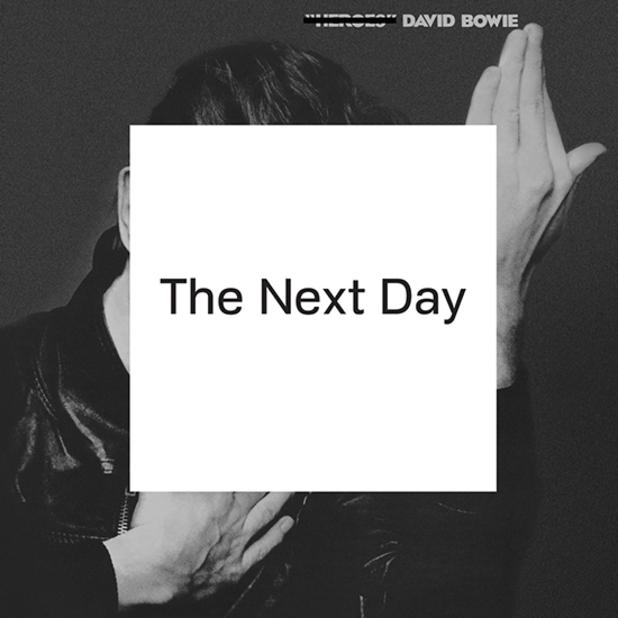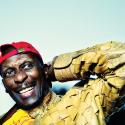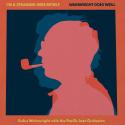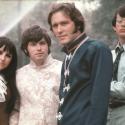“Stars are never sleeping, dead ones and the living” sings David Bowie on the “The Stars (Are Out Tonight)”, The Next Day’s third track. He could have been singing about himself. Having apparently hibernated for a decade after heart surgery, his return puts to bed speculation about retirement. More than that, The Next Day finally extinguishes one of the great Bowie what-ifs – what if he had continued the path set by 1980’s Scary Monsters (and Super Creeps) and the trio of albums which preceded it?
Scary Monsters wasn’t afraid to look back and revisit Major Tom. Similarly, The Next Day meets Bowie’s past head on, quite literally so given the cover image’s retooling of the sleeve of Heroes. It’s a very specific era that’s being disinterred: his so-called “Berlin Years”, 1976 to 1979, and just after. They’re heard musically, lyrically and, most significantly, atmospherically.
The album’s first single 'Where Are We Now?' takes on a greater gravity in this fresh context
The Next Day opens with its title track. Squalls of Scary Monsters guitar punctuate this son-of-Lodger’s “Boys Keep Swinging”. Next up, "Dirty Boys” evokes “Beauty and the Beast” from Heroes. “Dancing Out in Space” has the bounce of “Lust for Life”, which Bowie wrote for Iggy Pop.
The initial sense of a comfort zone being retreated into is reinforced by the familiar cast Bowie has assembled for The Next Day: long-time producer and associate Tony Visconti, regular bassist Gail Ann Dorsey, Serious Moonlight-era sax player Steve Elson, drummers Zachary Alford and Sterling Campbell, guitarist Earl Slick and designer Jonathan Barnbrook, who had worked on Bowie's Heathen and Reality albums.
Yet that’s shot out of the water by the simple fact that The Next Day is bloody good. Possibly great. Time will tell on that, but it's instantly clear that this is an album from an artist firmly in command of their muse and (almost) totally sure-footed.
"Almost" because the album’s seventh cut, “If You Can See Me”, doesn’t sit snugly alongside its fellow album tracks. The jazz-fusion riff - vaguely Frank Zappa-ish - and the rhythmic feel (nodding towards Earthling’s dalliance with drum'n'bass) might work well if decoupled from The Next Day, but sequenced as part of the album the song breaks the flow.
Flow is obviously a massive consideration. The opening quartet - “The Next Day”, “Dirty Boys”, “The Stars (Are Out Tonight)” and “Love Is Lost” (with Bowie playing an incredible, wheezy Acetone-like organ that’s high in the mix) - are breathless, joyful and uplifting. Then the pace lets up with the album’s first single, the reflective “Where Are We Now?” which takes on a greater gravity in this fresh context.
Watch the video for The Next Day's second single "The Stars (Are Out Tonight)"
That song was largely seen to be from the point of view of a man in his mid-sixties respooling his past. Musically, The Next Day does this too. But it also looks into more universal pasts. The thrillingly multi-leveled “How Does the Grass Grow” borrows The Shadows’ “Apache”. As he sings the refrain of the early Sixties’ instrumental, Bowie's voice is underpinned by the drum pattern from The Beatles' “Tomorrow Never Knows”. Then he declares “there will be no tomorrow.” “Valentine’s Day” pays homage to the New York band Television (Tom Verlaine’s “Kingdom Come” was covered by Bowie on Scary Monsters) by filching a piece of the riff from their “See No Evil”. London isn’t far away either. The Teddy and June in "Valentine's Day" echo the Terry and Julie of The Kinks' “Waterloo Sunset", and the Thames crops up in “I’d Rather Be High”.
Where this album is coming from is made even more complex by the Soviet-era (possibly Latvian or Hungarian) setting of “How Does the Grass Grow”. The greatest brow-furrower is the album’s closer, “Heat”, which, in namechecking Mishima, transports Bowie back to 1983’s Merry Christmas, Mr Lawrence. Instead though, the song unfolds as closer to the Scott Walker of 1984’s Climate of Hunter.
The Next Day will no doubt be endlessly unpicked, as it demands to be. Making sense of the three Deluxe Edition bonus tracks (including the two-minute instrumental “Plan” and the fantastic pop romp “I’ll Take You There”) in the context of the album is impossible. They’re stylistically on their own, and could never have been included.
For now though, it’s more than enough that The Next Day is a fantastic album.
- The Next Day is released on 11 March














Add comment